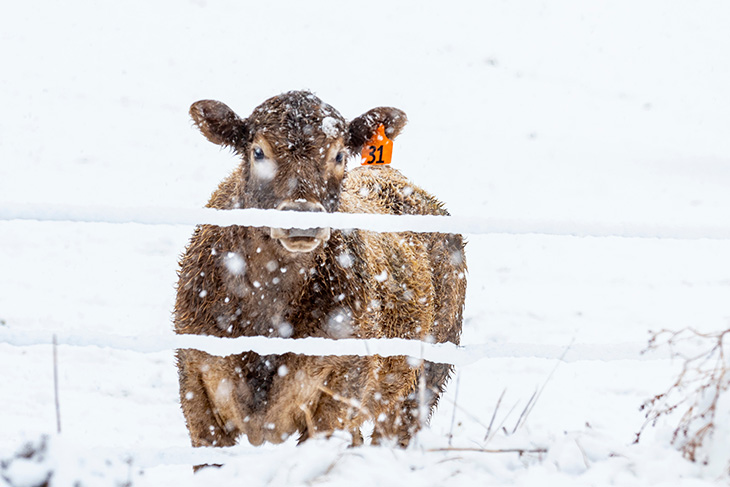
Agricultural News
Cattle Needs Rise as Temperatures Drop
Wed, 21 Dec 2022 06:31:50 CST
 Cattle producers need to follow recommended livestock-care checklists to mitigate significant dangers that arctic blasts bring to animal health and production, said Oklahoma State University experts.
Cattle producers need to follow recommended livestock-care checklists to mitigate significant dangers that arctic blasts bring to animal health and production, said Oklahoma State University experts.
Ranchers might not typically think about frozen water sources during a mild winter, for example.
So it’s important to remember that cattle in southern Great Plains states are relatively naïve when it comes to the presence of ice in the field, said David Lalman, OSU Extension beef cattle specialist and holder of the university’s Harrington Endowed Chair in Animal Science.
“Calves, yearlings and young cows may never have experienced ice-covered water sources, so they’re more likely than older cattle to walk into the middle of a pond as a group,” he said. “Breakthroughs can be a disaster and possibly even fatal. Keep the water open or move them to a less risky situation such as an automatic water tank.”
Other OSU Extension cold-weather recommendations include:
Make sure cattle have access to as much hay as they want to eat. Ruminal fermentation helps keep the animals warm. Hungry cattle do not create as much heat from fermentation.
Provide feed concentrate supplements every day, if possible.
Feed cattle beside or in a grove of trees or some other windbreak that is large enough for all the animals gathered. The better the windbreak, the lower the animalís cold stress.
If there is no natural windbreak available near a water source, a quick and simple one can be made by placing a line of round bales of straw or low-quality hay where cattle can bed down.
Ensure cattle have unrestricted access to unfrozen water. If water intake is limited, hay intake is reduced and ruminal fermentation is affected.
Feed cattle relatively close to their water source, if possible. Cattle naturally want to stay out of frigid winds. The farther away the water source, the longer they will wait to get a drink.
Cattle will eat snow to meet their water needs. However, it takes time for livestock to learn this strategy. The learning curve can result in physical distress.
Research indicates cattle consume 105% to 110% of predicted intake when temperatures drop below 22 degrees Fahrenheit and up to 125% of predicted intake when temperatures drop below 5 degrees. For wind chills of minus-20 degrees or lower, feed intake may be reduced because cattle are reluctant to leave sheltered areas.
“Extremely cold weather is one time that producers should not be overly concerned with waste when rolling out hay across the pasture, because cattle may take advantage of it as bedding and this will provide some relief from the extreme temperatures,” said Paul Beck, OSU Extension beef cattle specialist and holder of the university’s Dennis and Marta White Endowed Chair in Animal Science.
A video segment of Beck providing additional insights about cold-weather cattle care is available by clicking on the play button in the video box below.
Bedding is beneficial in helping to keep cattle insulated from snow or frozen ground and can help protect cow udders from frostbite and contamination. Breeding bulls should be moved indoors, if possible. Producers have too much money invested to risk frostbitten testicles in their breeding sires, which can result in reduced fertility.
Beck cautioned producers to take extra care when breaking ice on frozen ponds. If possible, do not do it alone. Have somebody on hand to render aid if the ice-chopper falls in. Keep a first-aid kit readily accessible and a hot thermos of coffee, tea or similar warm drink. If cutting through an ice-covered farm pond seems too risky, haul in water for the cattle.
Fact sheets detailing additional research-based information about best management practices for cattle operations are available online and through OSU Extension county offices.
WebReadyTM Powered by WireReady® NSI
Top Agricultural News
More Headlines...





